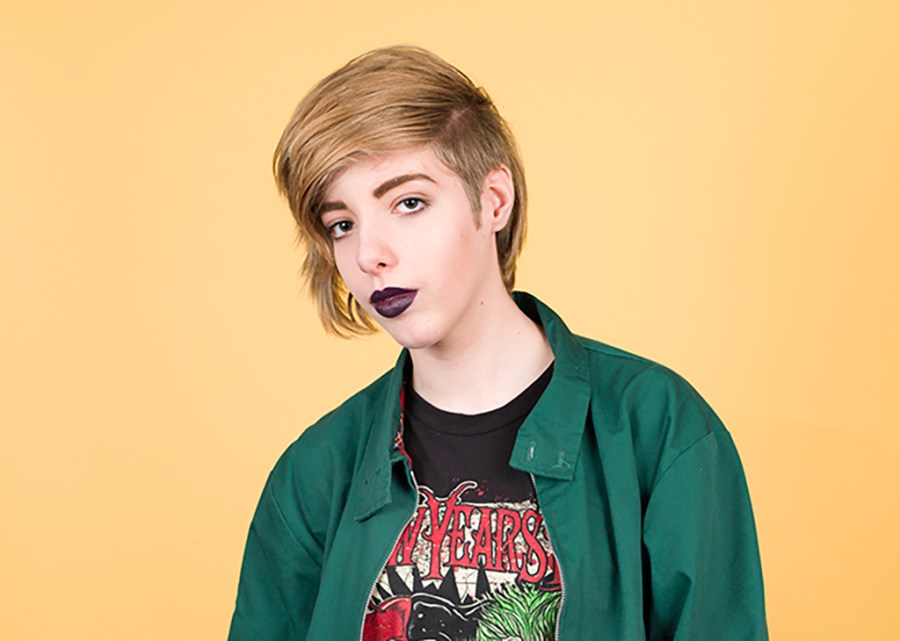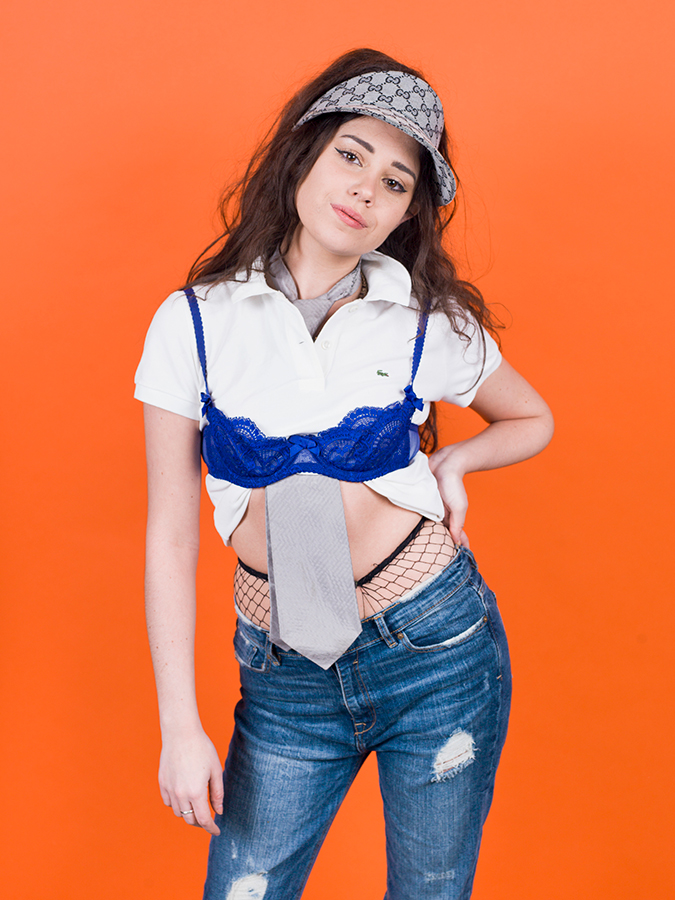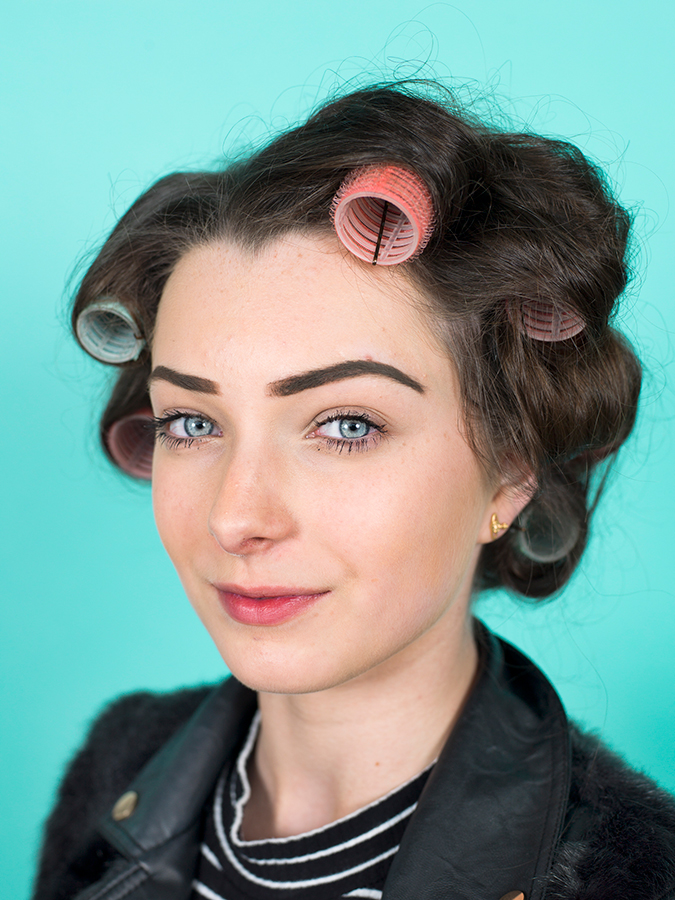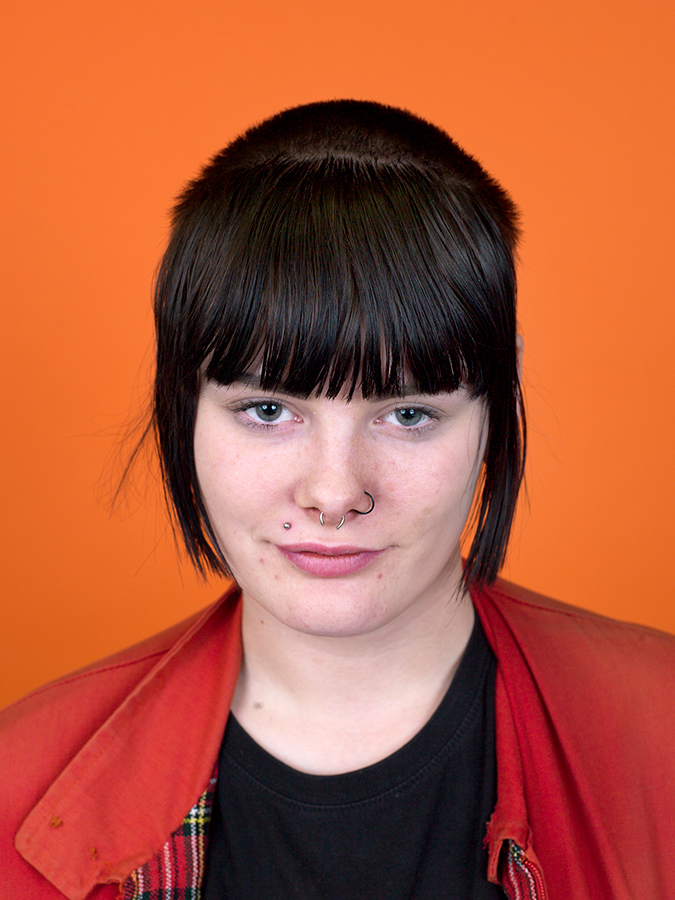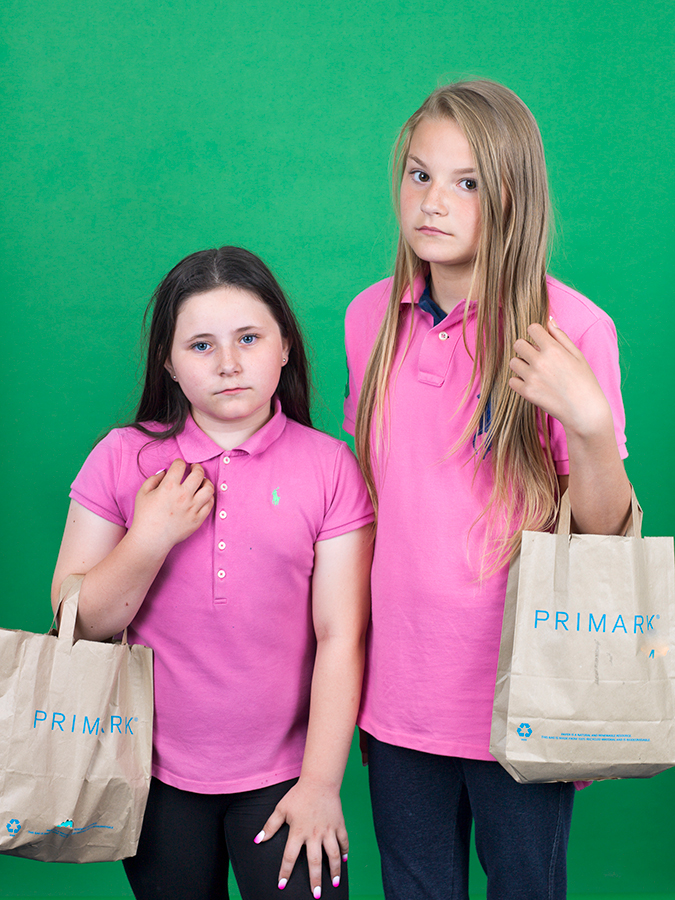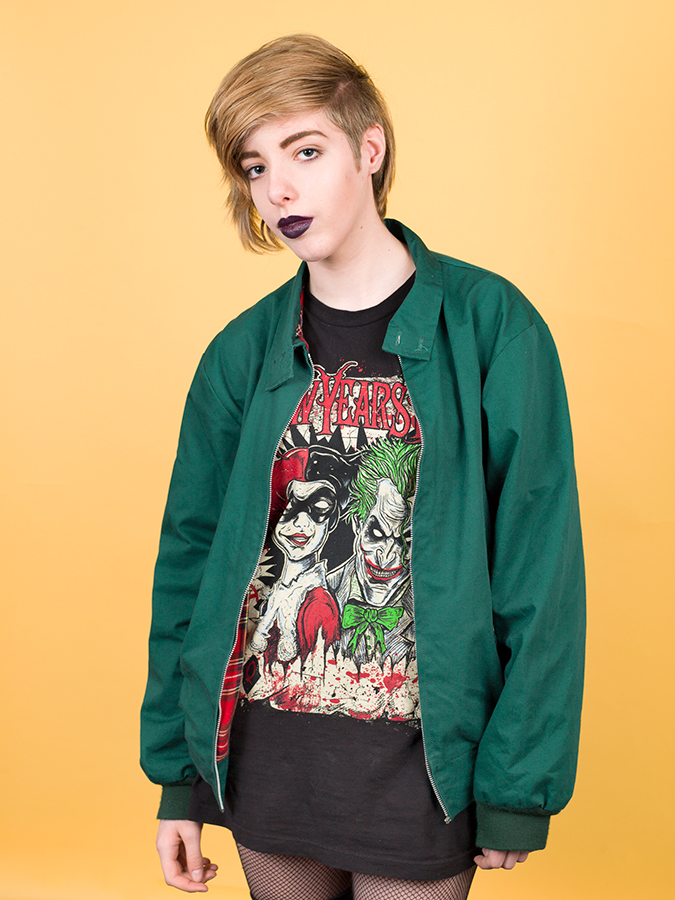Since 2013, Casey Orr has travelled the length and breadth of the UK meeting and photographing ‘Saturday Girl’ in a bid to discover what it is that unites and divides us. She tells Amy Davies more
It all started with a simple idea. American photographer Casey Orr had been living and working in the UK for a long time when she noticed young women with very prominent styling in the city of Leeds, particularly on Saturday afternoons. The thought occurred that she could explore many facets of identity through photographs of these women.
She could ask questions such as what it meant to belong to a certain ‘tribe’, what are the shared experiences that teenagers and young women experience, how are people using their appearance to create connections and even what it means to be a girl. She explains, ‘I was wondering if you could read something about culture and locality through the way that – predominantly – young women were appearing and behaving on the street.
‘I’m not from England, so the way that people dress up on a Saturday in the North of England to go out into town, it’s really different from where I grew up. I think it’s very much rooted in this working-class sense of leaving the work-a-day week and entering some kind of, you know, magical realm where you know you can be somebody else and be the most kind of magical, sparkly thing. I’ve always been really fascinated by that, and I still am.’
Some 600 portraits later, Casey’s project has been exhibited numerous times and she now has a book available to buy, published by Bluecoat Press at the end of last year. It’s a colourful, vibrant, playful and intriguing volume that seeks to answer or at least address many of the questions above, and approaches the topic with humour and verve, while giving the participants a feeling of belonging, identity and a welcome place in the world.
As is often the case, it was never Casey’s intention for the project to last this long, or to span the number of cities and towns she ended up in. Originally, the project centred on Leeds, and was exhibited there in 2014. However, after visiting Liverpool for the Look Photography Festival, Casey noticed that the girls here were quite different, despite the physical distance not being particularly big.
From then on, she wondered if she could explore the differences between various regions as well as the other questions she had in mind. For the Saturday Girl project, Casey would travel between cities – always visiting on a Saturday (of course) and set up her pop-up studios in locations such as shopping centres.
Casey wanted the project to have the same kind of tropes as fashion and portrait-studio type photography. To that end, she’d put out posters and flyers encouraging people to come and visit, but she would also wander the streets to recruit participants. Arguably this has skewed the project towards the confident, the outgoing and those who are keen to be photographed – but considering the aim was to explore the identities of those who really do want to be seen, that makes a lot of sense.
Working in medium format, there’s also a deliberateness and stillness to each of the portraits. Originally working with a digital Hasselblad camera, more recently Casey has been using a Fujifilm GFX paired with an 80mm lens – a 35mm equivalent of around 50mm – something which she describes as ‘just brilliant’.
Most of the projects in the book appear to be quite naturalistic, which Casey says is a result of minimal direction. Sometimes she admits that she feels she needs to discourage the performative behaviour that comes so readily to many when placed in front of a lens. ‘I think that people – especially young women – have a kind of “misunderstanding” of what you do in front of the camera,’ she explains.
‘That idea that you are meant to perform in a certain way, and they’re smiling and so on. So, I have to kind of break that down in a way, but without directing too much. It [posing] is so ubiquitous in our lives so I kind of want to say to them “this isn’t that”, this isn’t that relationship with the camera.
I sometimes end up saying things like “smile with your eyes” and so on. Some people take longer to get the hang of it, but other people just stand in front of the camera and it’s just amazing from the off – it just changes with each person.’ Flicking through the book, you see that some portraits are full-length, others are a tighter crop, while others still are a simple headshot.
The decision about which to choose for each person came down to ‘intuition’ about which would work best. Several photographs of each person were created during the shooting process, so it was also a question which came out on top during the editing process for the book. As you might imagine, having photographed more than 600 people, that book editing process was no easy feat.
Indeed, as Casey explains, ‘It took a really long time. I worked and tinkered on it for years, really. My conversations with Bluecoat [the publisher] started in 2018 so it really was a very long process. Things really took off when a graphic designer, Andy Edwards, came on board last spring and he pushed it to another level. He kind of brought in the yellow at the beginning, and suggested we added in the behind-the-scenes images of the studio which I think really add to it.
‘Something else that he did was introduce both the grids of pictures, and also the double-page spreads at the start of each city. Having that means that you have to turn the book to see the picture. I wanted the book to have this feeling of the frenetic energy that the people have. They’re funny, they’re loud, colourful, vibrant and joyful. I wanted the book to be constantly moving in the way that this young energy and language is constantly moving. I really value the collaboration that working with the graphic designer brought.’
Once Casey had collected a few cities, this idea of differences between locations became clearer. Not just cities, but also the different countries of the UK too. Beyond that, as the project has spanned a long period of time, there are both differences and shared experiences that seem to occur time and time again. One big one is the very meaning of what it is to be a girl – something which even since 2013 has somewhat shifted in the public discourse. ‘What “girl” meant in 2013 when I started was very different than it is now,’ says Casey.
‘It’s much more complicated and identity has changed. Young people started coming up into the studio who were not just women, but also men and non-binary people. The project has started to reflect that and it’s been really exciting how you can see the changes in culture coming through the studio.
‘In a sense, the book is like a time capsule. The original Saturday Girl project is completed, so we get a snapshot of what identity was like 2013-2019, and what all these different places and people were like.’ In terms of regional differences, Casey says she noticed the strongest variations in the port cities.
‘They have a different feel to them,’ she confirms. ‘There’s a connection to the outside, to people coming in, into the ports from other places, that is different from the landlocked places. I feel like you can read that. Scotland felt very particular to that place, as did Northern Ireland. London was a strange one because who’s to say what London is – it’s such a big place.
For that, I was in the Brick Lane area, and I thought well, I can’t necessarily say what London is, but I can say what London on this particular day is. That said, the London girls definitely felt like they were more aware of this kind of project and this kind of fashion world. There was a certain kind of more sophisticated posing going on, and more of a weariness towards the studio.’
Although ‘Saturday Girl’ as it originally was is now over, this kind of work has a habit of never really being done. As such, the pandemic and associated lockdowns presented an opportunity to explore culture and identity in new ways. A new series called ‘Saturday Girl About Town’ takes the project and spins it in slightly new directions.
In this new project, the portrait backdrop is often brought into the street itself, rather than being hidden away in some interior location. The background colours are also even brighter and more vibrant, too. This time, eye-contact is of utmost importance, and interestingly, the idea that it’s just ‘girls’ is no longer so important. ‘Nobody seems to mind being photographed under the ‘girl’ label any more,’ reveals Casey. ‘Anyone’s welcome, everybody’s welcome and all different people are coming in and it’s really exciting.
‘With Covid, the discussion became, what happens to your visibility or what happens to your identity or your sense of exploring who you might be when you have no access to the streets in the same way. There isn’t that kind of sense of walking through the streets wearing an identity and seeing how it feels, trying things out, seeing how it feels through being out with other people.’
A program being run by Historic England called The High Street Heritage Action Zones also spurred Casey into action. This is a huge project designed to unlock the potential of high streets across England to fuel cultural, social, and recovery into forgotten or neglected towns. ‘All these things started spinning around, like what is the street for, and how much the streets have changed,’ Casey says.
‘So much retail is now gone, so what are the town spaces going to be like, what are these communal meeting spaces going to be without the shops. These kind of ideas came together and I’m deep in the middle of those right now. It’s really great – there’s a whole new kind of feeling that I’m starting to see young people doing all these different new things.’ We can’t wait to see what comes next.
Casey Orr
Casey Orr is an award-winning photographer and artist. Her work has been displayed in numerous galleries in both the US and the UK. She has also been published in a wide variety of publications including The RPS Journal, Aesthetica and The Guardian. Casey’s ongoing Saturday Girl About Town project can be followed via her Instagram page (@caseyorrphoto), and you can find out more about her other work and the book published by Bluecoat Press at her website caseyorr.com.
Related Articles:
Hannah Starkey: Redefining the representation of women
Get photo inspiration from your neighbours
Barbara Farkas: highlighting environmental issues through self-portraiture

